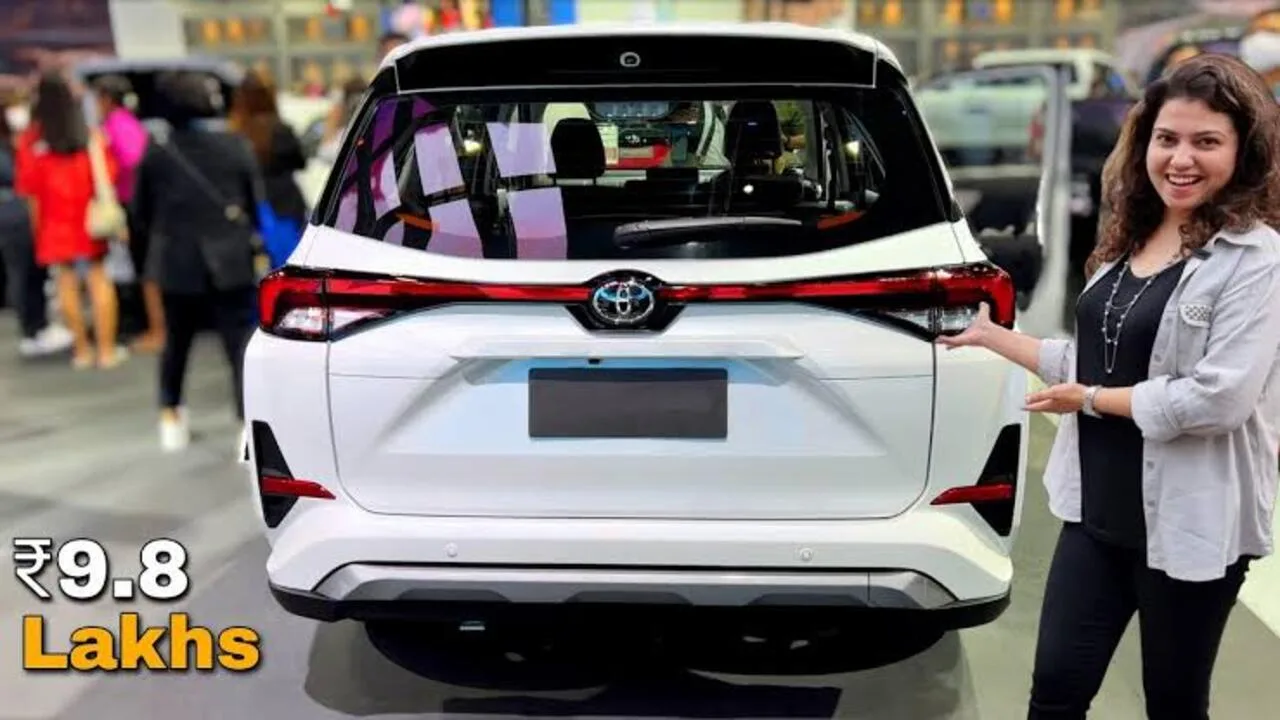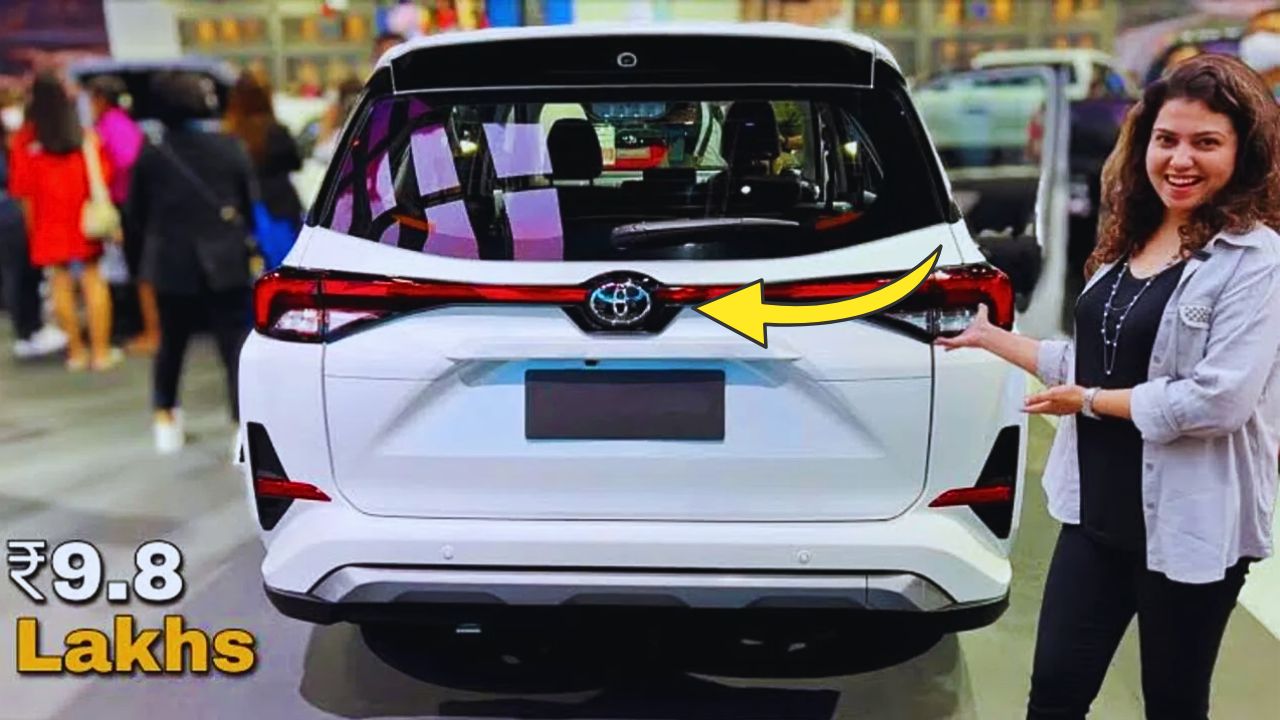In an automotive landscape dominated by increasingly expensive SUVs and premium 4x4s, the Mini Fortuner has emerged as a groundbreaking alternative, rapidly earning its reputation as the definitive “low budget off-roader.” This compact yet capable vehicle has revolutionized the market by offering genuine off-road performance at a fraction of the cost of traditional options, creating a new segment that appeals to adventure enthusiasts, practical buyers, and off-road communities alike.

Origins and Development
The Mini Fortuner was conceived in 2021 as Toyota’s response to growing demand for affordable utility vehicles with genuine off-road capabilities. Unlike many budget SUVs that merely offer rugged styling with limited actual performance, Toyota engineers were tasked with creating a vehicle that maintained true off-road DNA while significantly reducing production costs.
Development was led by chief engineer Takashi Yamamoto, who previously worked on the standard Fortuner platform. “Our challenge was to distill the essence of the Fortuner’s capabilities into a smaller, more affordable package without compromising on the fundamental off-road performance,” Yamamoto explained in a 2022 interview with Automotive Quarterly.
The project faced several hurdles, particularly in balancing cost reduction with durability requirements. The solution came through innovative manufacturing processes, simplified electronics, and strategic parts sharing with other Toyota models. After 18 months of development and testing across various terrains, from the Australian Outback to the mountains of Thailand, the Mini Fortuner was ready for production.
Complete Technical Specifications
Dimensions and Weight
- Overall Length: 4,395 mm
- Overall Width: 1,795 mm
- Overall Height: 1,790 mm
- Wheelbase: 2,680 mm
- Ground Clearance: 220 mm
- Approach Angle: 28 degrees
- Departure Angle: 26 degrees
- Breakover Angle: 24 degrees
- Curb Weight: 1,650 kg
- Gross Vehicle Weight: 2,300 kg
Engine and Performance
- Engine Type: 1.8-liter turbocharged 4-cylinder (2TR-FE)
- Maximum Power: 165 hp @ 5,200 rpm
- Maximum Torque: 230 Nm @ 3,400 rpm
- Transmission Options: 6-speed manual or 6-speed automatic
- Transfer Case: 2-speed with electronic shift-on-the-fly
- Drive System: Part-time 4WD with rear differential lock
- Fuel Efficiency: 14.5 km/l (highway), 11.2 km/l (city)
- Fuel Tank Capacity: 65 liters
- Acceleration (0-100 km/h): 11.2 seconds
- Top Speed: 170 km/h
Chassis and Suspension
- Body Construction: Body-on-frame (modified ladder chassis)
- Front Suspension: Independent double wishbone with coil springs
- Rear Suspension: Multi-leaf spring with stabilizer bar
- Braking System: Ventilated disc (front), drum (rear)
- Steering: Hydraulic power steering
- Turning Radius: 5.4 meters
- Wheels: 17-inch steel (standard), 17-inch alloy (optional)
- Tires: 265/65 R17 all-terrain
Off-Road Features
- Wading Depth: 700 mm
- Hill Descent Control: Standard
- Hill Start Assist: Standard
- Traction Control: Advanced A-TRC system
- Crawl Control: Optional on higher trims
- Underbody Protection: Steel skid plates for engine, transfer case, and fuel tank
Interior and Comfort
- Seating Capacity: 5 passengers
- Cargo Volume: 619 liters (rear seats up), 1,645 liters (rear seats folded)
- Infotainment: 7-inch touchscreen with Bluetooth and USB connectivity
- Climate Control: Manual air conditioning with rear vents
- Upholstery: Water-resistant fabric
- Instrument Panel: Analog gauges with 4.2-inch multi-information display
Trim Levels and Variants
- Base: Essential 4WD capabilities with minimal features
- Adventure: Added off-road protection and enhanced suspension
- Expedition: Premium features with additional comfort upgrades
Market Performance and Sales
Since its launch in late 2022, the Mini Fortuner has significantly outperformed Toyota’s sales projections. The company initially targeted annual sales of 45,000 units globally, but by the end of 2023, over 87,000 units had been sold across 60 markets.
Regional sales breakdown (2023):
- Southeast Asia: 32,500 units
- Australia/New Zealand: 14,200 units
- Middle East: 11,800 units
- Africa: 9,400 units
- South America: 8,900 units
- North America: 6,500 units
- Europe: 3,700 units
The vehicle has performed particularly well in markets with challenging terrain and price-sensitive consumers. In Thailand, the Mini Fortuner captured 15% of the compact SUV market within its first year, while in South Africa, waiting lists extended to three months during peak demand periods.
Comprehensive Reviews and Reception
Expert Reviews
Off-Road Magazine (4.5/5 stars) “The Mini Fortuner delivers approximately 80% of the capability of premium off-roaders at about 50% of the cost. Its simplified approach to off-roading feels refreshingly honest in an era of overcomplicated SUVs.”
Strengths highlighted:
- Exceptional value for money
- Genuine off-road capabilities
- Mechanical simplicity and repairability
- Impressive fuel economy
Weaknesses noted:
- Basic interior comfort
- Limited sound insulation
- Modest on-road handling
Automotive Today (8.2/10) “What makes the Mini Fortuner remarkable isn’t that it can go everywhere a $70,000 4×4 can go—it can’t. What’s impressive is how little you have to compromise for the price point.”
The review particularly praised the vehicle’s durability during a 2,000-mile test across various terrains, noting that despite some limitations in extreme conditions, the Mini Fortuner completed 90% of the same trails as vehicles costing twice as much.
Global Auto Review (84%) “The Mini Fortuner represents the democratization of off-road capability. It’s not trying to be luxurious or technologically advanced—it focuses on delivering a rugged, capable platform at a price point that opens up off-roading to a much wider audience.”
The review emphasized the vehicle’s long-term value proposition, highlighting its expected durability and low maintenance costs compared to more complex off-road vehicles.
Consumer Reviews and Owner Feedback
Based on aggregated data from major automotive review sites and owner forums, the Mini Fortuner has received an average owner satisfaction rating of 4.3/5 stars across more than 3,500 verified reviews.
Common praise points from owners include:
- Affordability of both purchase and maintenance
- Surprising capability in challenging terrain
- Extensive aftermarket support
- Fuel efficiency compared to other off-road vehicles
- Reliability and durability
Frequent criticisms mention:
- Wind noise at highway speeds
- Limited rear passenger space
- Basic interior materials
- Firm ride quality on paved roads
Owner testimonial from Jason K. (South Africa): “After two years and 35,000 km, my Mini Fortuner has tackled everything from Namibian sand dunes to muddy forest trails. I’ve had zero mechanical issues despite regular off-road use. With basic modifications, it keeps up with vehicles costing three times as much.”
Aftermarket Ecosystem and Modifications
The Mini Fortuner’s simplified design and mechanical accessibility have fostered an extensive aftermarket ecosystem. Unlike many modern vehicles that require specialized tools and knowledge for modifications, the Mini Fortuner’s straightforward engineering allows for relatively easy owner-installed upgrades.
Popular Modifications
Suspension Upgrades:
- Basic lift kits (2-inch): $250-400
- Premium lift kits with reservoir shocks: $800-1,200
- Heavy-duty leaf springs: $300-500
Protection Equipment:
- Steel front bumpers: $350-700
- Rock sliders: $250-450
- Skid plate packages: $400-800
- Rear bumpers with tire carriers: $500-900
Performance Enhancements:
- Snorkel systems: $200-350
- ECU tuning packages: $400-600
- Improved air intake systems: $150-300
- Upgraded exhaust systems: $300-500
Utility Additions:
- Roof racks: $300-700
- Auxiliary lighting: $200-600
- Winch installations: $500-1,000
- Drawer storage systems: $400-900
According to aftermarket parts manufacturer OffTrail Solutions, the Mini Fortuner became their fastest-growing product line within six months of the vehicle’s release. “We’ve seen unprecedented demand for Mini Fortuner accessories,” notes their marketing director. “What’s unique is the wide range of customers—from budget-conscious beginners to experienced off-roaders building lightweight trail rigs.”
Community Impact and Culture
The Mini Fortuner has developed a vibrant community culture that extends beyond typical owner groups. The vehicle’s affordability has attracted many first-time off-roaders, creating a more diverse and inclusive off-road community.
Digital Communities
Online communities dedicated to the Mini Fortuner have experienced explosive growth:
- The “Mini Fortuner Owners” Facebook group: 325,000+ members
- Mini Fortuner Forum: 180,000+ registered users with over 2.5 million posts
- Instagram hashtag #MiniFortuner: 1.2+ million posts
- YouTube channels dedicated to Mini Fortuner builds average 45% higher viewership than similar channels for other vehicles
These communities have become valuable resources for DIY modifications, troubleshooting, and trip planning. Many feature detailed build guides that allow owners to gradually enhance their vehicles as budget permits.
Off-Road Events and Gatherings
The Mini Fortuner’s popularity has spawned dedicated events and competitions:
- The annual “Mini Fortuner Jamboree” attracted over 5,000 vehicles in 2024
- “Budget Basher” competitions specifically for minimally modified Mini Fortuners
- “Stock Class Challenge” events highlighting the capabilities of unmodified vehicles
These events emphasize accessibility and community support rather than the expensive, heavily modified vehicles typically seen at traditional off-road gatherings.
Economic Impact on Off-Road Industry
The Mini Fortuner phenomenon has significantly reshaped parts of the off-road industry:
Democratization of Off-Road Recreation
Off-road parks and trails report a 30-40% increase in visitors since 2022, with approximately 25% of new visitors driving Mini Fortuners. This has led many locations to develop new trail systems specifically designed for vehicles with the Mini Fortuner’s capability level.
Aftermarket Manufacturing Boom
The surge in demand for Mini Fortuner parts has created manufacturing opportunities, particularly for smaller companies. Over 120 new businesses focused on Mini Fortuner accessories have been established since 2023, creating an estimated 3,500 jobs globally.
Competitive Response
The Mini Fortuner’s success has prompted responses from other manufacturers:
- Suzuki expanded its Jimny lineup with a slightly larger “Trail Edition”
- Ford introduced a stripped-down “Basecamp” version of the Bronco Sport
- Mitsubishi revived the Pajero Mini concept with enhanced off-road capabilities
- Kia announced development of a new “Adventure” platform based on their small SUV chassis
Industry analysts predict that this “budget off-roader” segment could grow to represent 15% of the global SUV market by 2027.
Future Developments and Outlook
Toyota has confirmed continued investment in the Mini Fortuner platform, with several enhancements planned for upcoming model years:
Confirmed Updates for 2025-2026:
- Hybrid powertrain option improving fuel economy by an estimated 20%
- Enhanced electronic off-road assistance systems
- Expanded trim levels including a “Trailhawk” competitor
- Introduction of a slightly longer wheelbase variant with optional third-row seating
Rumored Developments:
- Full electric variant in development (expected 2027)
- Possible pickup variant with similar capability profile
- Advanced connectivity features with offline navigation capabilities
Redefining the Off-Road Paradigm
The Mini Fortuner represents more than just another budget SUV option—it has fundamentally shifted expectations about what affordable off-road vehicles can achieve. By prioritizing essential capabilities over luxury features, Toyota has created a vehicle that delivers authentic off-road performance at a price point that opens the experience to a much wider audience.
As gas prices fluctuate and environmental concerns grow, the Mini Fortuner’s relatively efficient platform also offers a more sustainable approach to off-road recreation. Its emphasis on mechanical simplicity and repairability stands in contrast to the increasingly complex and electronically dependent premium off-roaders.
Whether as an affordable entry point for off-road enthusiasts, a practical adventure vehicle for budget-conscious travelers, or a capable daily driver for those in challenging environments, the Mini Fortuner has established itself as a transformative force in the automotive landscape. Its rapid rise from budget curiosity to defining a new market segment demonstrates that sometimes, less really is more—especially when what’s been removed is cost rather than capability.
Also read:The Legend Returns, Yamaha RX 125 Set to Revolutionize the Two-Wheeler Market – hdtc.co.in
